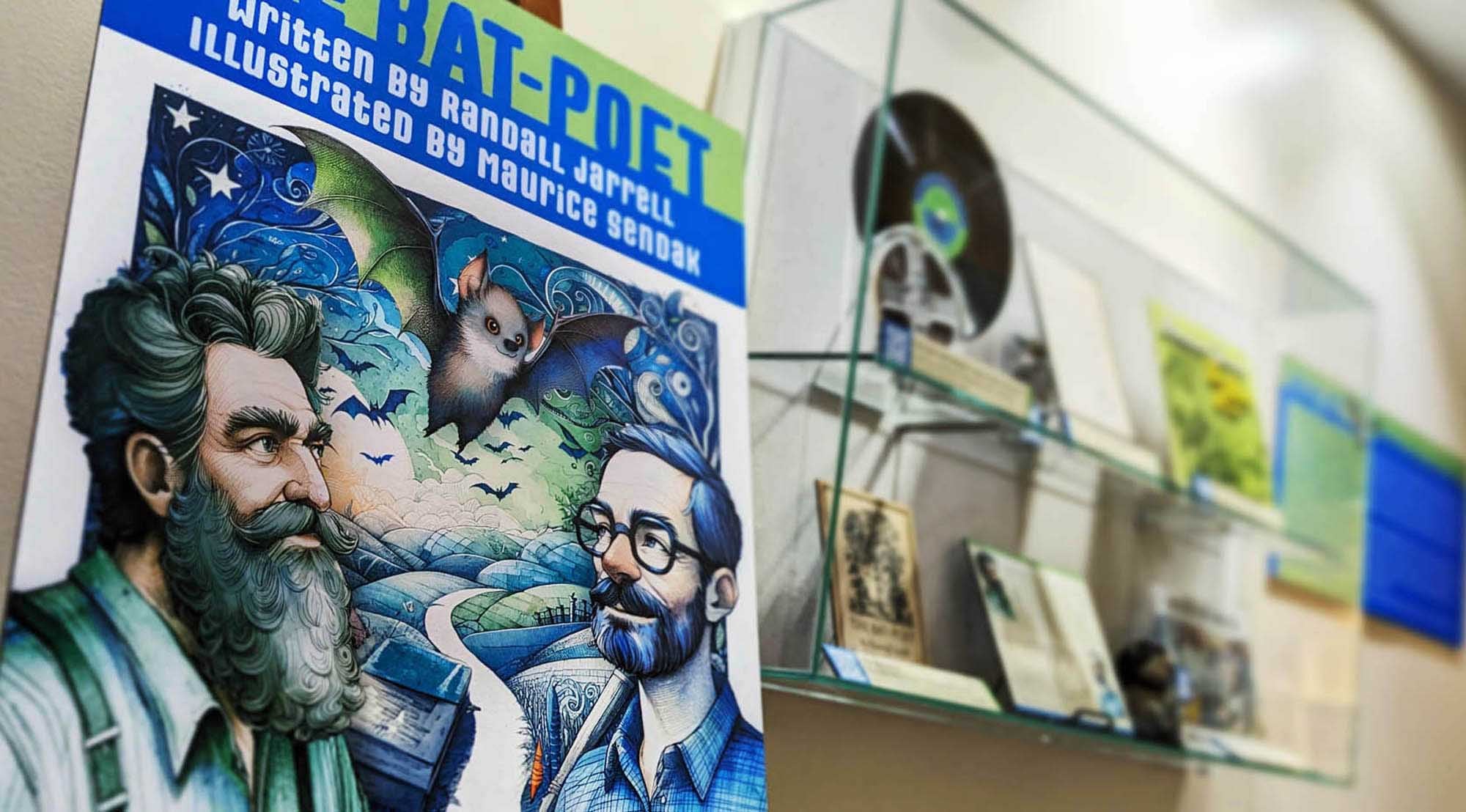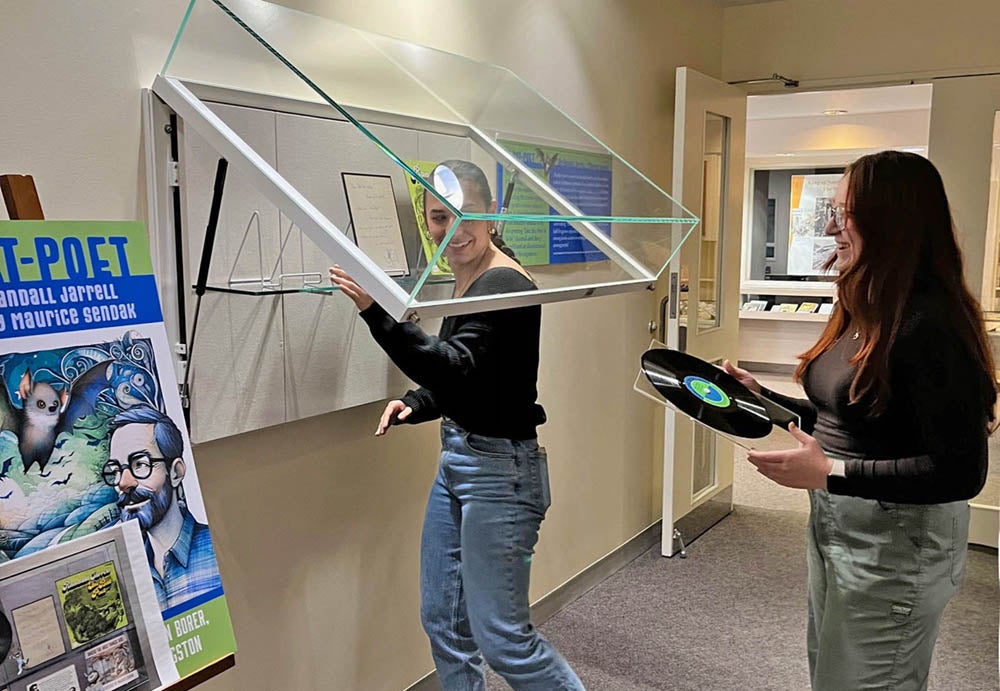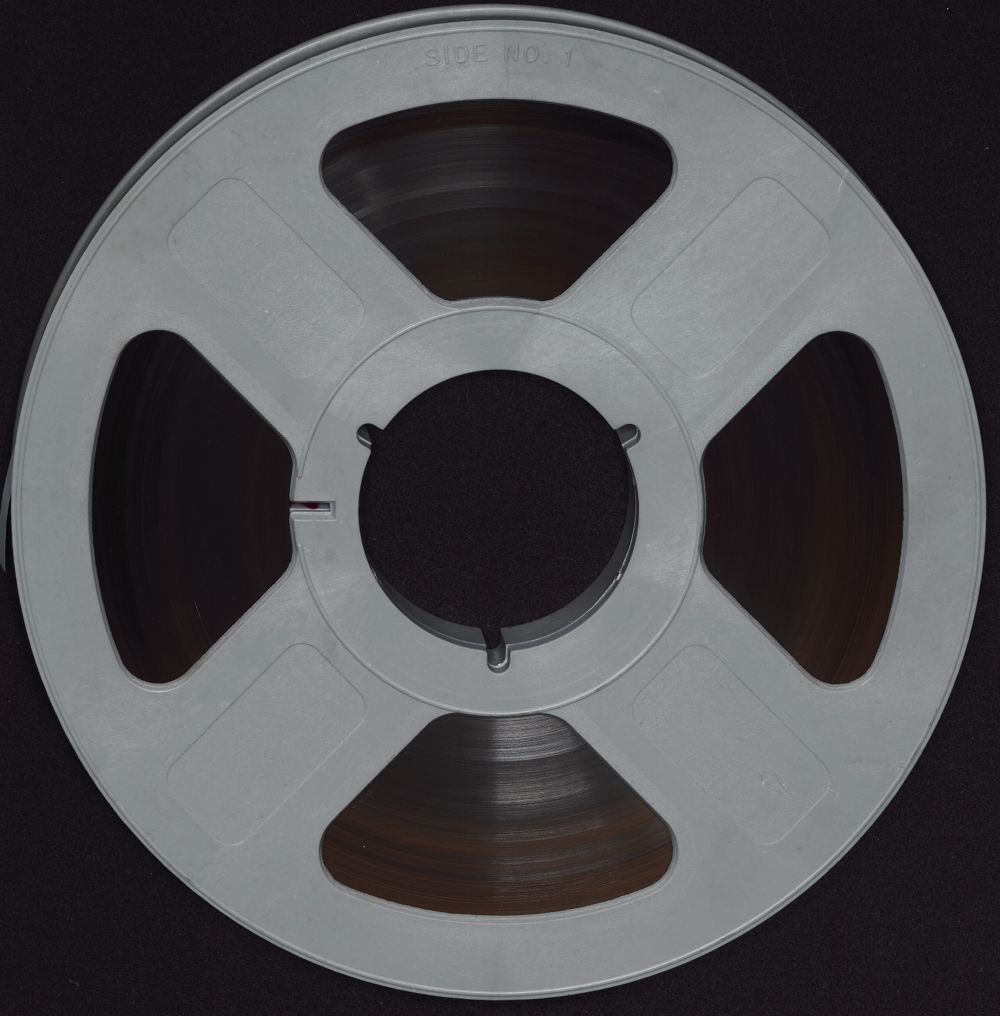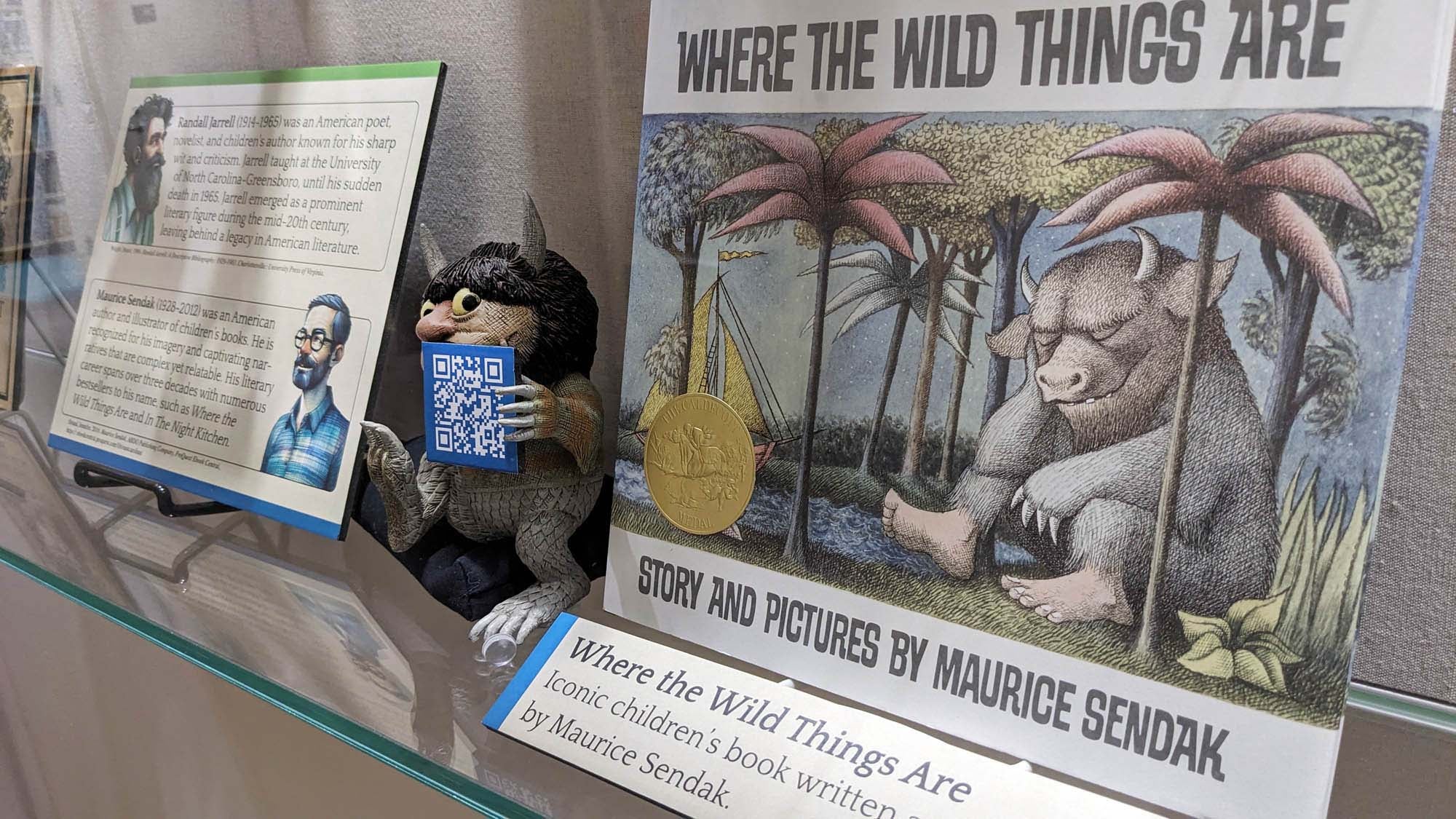Celebrate World Poetry Day with The Bat-Poet: A Classic Children’s Story by Randall Jarrell and Maurice Sendak
Collection: Stuart Wright Collection: Randal Jarrell Papers (#1169-005), East Carolina Manuscript Collection, J. Y. Joyner Library, East Carolina University, Greenville, North Carolina, USA

World Poetry Day is on March 21st, a day that celebrates linguistic expression and the power of poetry. To celebrate this occasion, East Carolina University’s Special Collections is housing an exhibit to showcase the work of The Bat Poet and a recording of the story read aloud by its author. Furthermore, the exhibit honors two remarkable figures whose contributions to literature and art have left a lasting mark: Randall Jarrell and Maurice Sendak.

Olivia Livingston & Katelyn Rollins install the exhibit.
The Bat-Poet is a heartwarming and inspiring story by Randall Jarrell, with detailed illustrations crafted by Maurice Sendak. It is an expressive children’s book from 1963 that is still remembered decades later. The Bat-Poet tells the story of a bat that wakes during the day and writes poems about the strange world that he sees. I Following Randall Jarrell’s death, his wife recounted him once saying “The Bat-Poet was a story half for children and half for grown-ups and that makes for a book as peculiar among books as bats are among animals, and poets are among people.”
Randall Jarrell (1914-1965) is an American poet, novelist, and children’s author known for his sharp wit and criticism. Born in Nashville, Tennessee, Jarrell’s poetic journey began in earnest during his years at Vanderbilt University, where he encountered the works of modernist poets. Once obtaining his master’s in English from Vanderbilt University, Jarrell joined the Air Force during World War II, where he wrote poems and stories about his experiences of war. However, his later works solidified his reputation as a poet as he explores human nature with emotional resonance and themes such as war, mortality, and time.

Audio recording of Randall Jarrell reading The Bat-Poet.
Beyond his poetic endeavors, Jarrell was an advocate for poetry as an art form and as a way of understanding the world. Until his sudden death in 1965, Jarrell taught at University of North Carolina-Greensboro, inspiring countless writers through his deep appreciation for the craft of poetry. Jarrell has earned numerous awards throughout his career, emerging as a prominent literary figure during the 20th century. He has ultimately left behind a legacy in American literature through his works and critiques.
Maurice Sendak (1928-2012) illustrator, author, and poetic visionary, is best known as the creator of the beloved children’s classic Drawing inspiration from his own childhood experiences, Sendak’s stories resonate with themes of imagination, resilience, and the complexities of childhood. His distinctive illustrations and imaginative storytelling have captivated generations of readers, earning him numerous awards and accolades throughout his career. His literary career spans over three decades with numerous bestsellers to his name. Later, in 2009, the book was adapted into a movie.

Where the Wild Things Are book and figurine as displayed in the exhibit.
Moreover, Maurice Sendak and Randall Jarrell’s collaboration further underscores their deep appreciation for the power of language and imagery. Their joint effort, The Bat Poet, seamlessly blends Jarrell’s poetic prose with Sendak’s creative illustrations, resulting in a timeless tale that continues to enchant readers of all ages. As we celebrate World Poetry Day, the legacies of Randall Jarrell and Maurice Sendak serve as a poignant reminder of the interconnectedness of literature, art, and the human experience.
Check out the colorful and engaging exhibit on The Bat Poet and Where the Wild Things Are to get a glimpse of their work in person. The exhibit is found on Joyner’s 3rd floor at the entrance to the North Carolina Collections.
Sources:
Jarrell, Randall. 1963. The Bat-Poet. Illustrated by Maurice Sendak. New York: The Macmillan Company.
Strand, Jennifer. 2016. Maurice Sendak, ABDO Publishing Company. ProQuest Ebook Central, https://ebookcentral.proquest.com/lib/eastcarolina/detail.action?docID=5262535.
Randall Jarrell reading his work the “Bat-Poet”. 1169-005.8.a. East Carolina University Digital Collections. https://digital.lib.ecu.edu/85745. Accessed 20 Mar. 2024.
Corrected